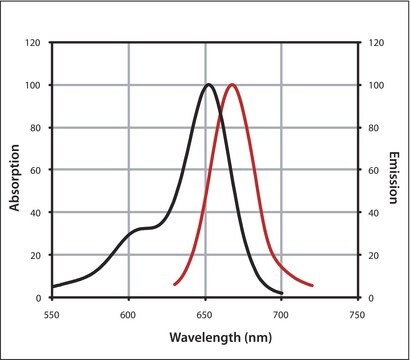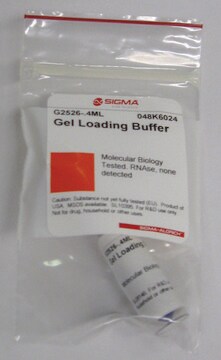PCG2004
TruPAGE™ Precast Gels
4-20%, 10 x 10cm, 12-well
Sinónimos:
Precast Gels for SDS-PAGE, Precast Polyacrylamide Gels
About This Item
Productos recomendados
description
for use with Life Technologies XCell SureLock™ XCell I™, XCell II™ Mini-Cell and Bolt™ Mini Gel Tank
shelf life
24 mo. at 2‑8 °C (from the date of manufacture)
packaging
box of 10 ea
concentration
4-20% polyacrylamide
cassette W × L
10 cm × 10 cm
gel thickness
1 mm
well size × volume
12 wells × 35 μL
compatibility
for use with Lonza Ltd PAGEr™ Minigel Chamber
storage temp.
2-8°C
¿Está buscando productos similares? Visita Guía de comparación de productos
Application
Features and Benefits
The precast polyacrylamide gels for SDS-PAGE come in two gel cassette sizes (10 x 10 cm and 10 x 8 cm) for increased equipment compatibility. TruPAGE gels have extra tall wells to prevent lane-to-lane overflow and come in two well formats (12-well and 17-well). TruPAGE gels are available in several different gel concentrations (10%, 12%, 4-8%, 4-12% and 4-20%) to provide desired resolution of proteins of any size. Please refer to the migration chart to select the appropriate precast gel and running buffer combination for your experimental needs. Only use TruPAGE formulated buffers when running TruPAGE gels to ensure optimal results and reproducibility. Please review the TruPAGE Technical Bulletin for buffer formulation recipes and general running guidelines.
- Long Shelf Life - 2 years from the date of manufacture when stored properly.
- High Performance - Extended full length resoling gels provides improved resolution.
- Durable - Stronger than standard polyacrylamide gels, preventing tearing during post-electrophoresis processing.
- Extra Tall Wells - Eliminate sample spill over and accommodate larger sample loading volumes with well teeth that protrude above the back plate of the gel cassette.
- Excellent Compatibility - TruPAGE gels are compatible with the popular gel running equipment, including Sigma-Aldrich′s Dual Run Tank (Z741768) and other manufacturers like Life Technologies, Bio-Rad®, Lonza®, Hoefer®, CBS Scientific as well as others, allowing you to continue using the equipment you already own.
- Fast - Run times as low as 30 minutes.
- Great Value - Gels and buffers offer a cost-saving alternative without sacrificing performance and experimental integrity.

There is no tape to remove. There is also no comb to remove, which prevents torn or bent wells. Instead, the cassettes lock well fingers in place.
Legal Information
Storage Class
12 - Non Combustible Liquids
wgk_germany
WGK 2
flash_point_f
Not applicable
flash_point_c
Not applicable
Elija entre una de las versiones más recientes:
Certificados de análisis (COA)
It looks like we've run into a problem, but you can still download Certificates of Analysis from our Documentos section.
Si necesita más asistencia, póngase en contacto con Atención al cliente
¿Ya tiene este producto?
Encuentre la documentación para los productos que ha comprado recientemente en la Biblioteca de documentos.
Nuestro equipo de científicos tiene experiencia en todas las áreas de investigación: Ciencias de la vida, Ciencia de los materiales, Síntesis química, Cromatografía, Analítica y muchas otras.
Póngase en contacto con el Servicio técnico








